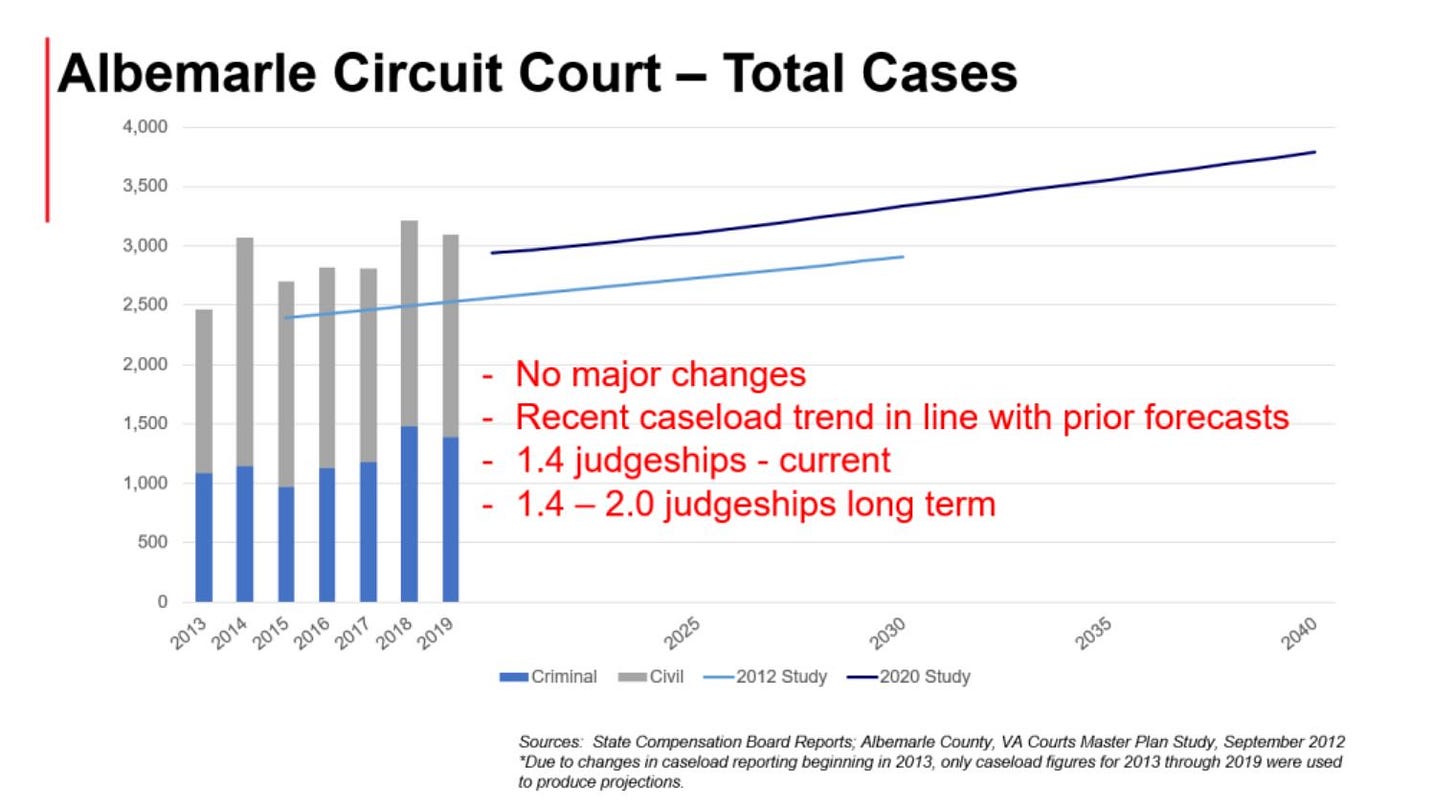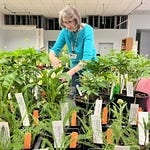In today’s Patreon-fueled shout-out from an anonymous supporter: It may seem like we just had an election, but 2021 is once again a city, county, and state election year. Party primaries are coming soon on June 8, 2021. The deadline to register to vote, or update an existing registration is Monday, May 17, 2021. Visit the Virginia Department of Elections to learn more.
On today’s show:
The Albemarle Board of Supervisors gets an update on the courts expansion and renovation
The Moton Museum in Farmville commemorates 70 years since an important walkout
There’s a new version of a planned multifamily development planned near Forest Lakes
There are three upcoming forums for the Democratic City Council nomination race
On Friday, federal officials lifted the pause on the administration of the Johnson and Johnson vaccine. An advisory panel recommended that additional information about the risk of blood clots be given to people, and the Centers for Disease Control and the Food and Drug Administration quickly urged states to proceed. Virginia Vaccine Coordinator Danny Avula issued a statement soon after stating that the pause should give additional assurances about the safety of the vaccination process. (more in the Virginia Mercury)
As of this morning, 28.7 percent of Virginians are fully vaccinated and just over 5.9 million doses have been administered. The Johnson and Johnson pause did not slow down the pace as there the seven-day average has remained in the mid-70,000’s.
The number of new cases continues to decline this week. For two days in a row, the number of new cases has been under 1,000. That’s the first time that’s happened since late October. The seven-day average is at 1,117 today and the percent positivity is down to 5.4 percent.
There are still six weeks until the Democratic Primary on June 8, but early voting has begun across Virginia. As of yesterday, 631 mail-in ballots had been requested in Charlottesville according to data contextualized by the Virginia Public Access Project. That figure in Albemarle is 2,276, 260 in Fluvanna, 153 in Greene, 238 in Louisa, and 118 in Nelson.
There are three remaining campaign forums for the three Democratic candidates for the two nominations for Charlottesville City Council. The Public Housing Association of Residents will hold an event on May 12, followed by the Martha Jefferson Neighborhood Association on May 20. I’ll be holding an event with Neil Williamson of the Free Enterprise Forum on May 27.
The Fry’s Spring Neighborhood Association on March 10 which you can access the audio on Information Charlottesville. There was also an April 6, 2021 event on the I Love Cville video platform.

In March, residents of the Forest Lakes neighborhood dominated an Albemarle Planning Commission public hearing for a multifamily apartment complex planned for the intersection of U.S. 29. Go back and read that story if you have a moment.
Now RST Development has filed a revised plan with the county that among other things reduces the number of units from 370 to 340. They’ll get there by eliminating 32 townhomes, planting more green space, and adding more landscaping to serve as a buffer. The new proposed unit mix is 254 apartments and 86 townhouses
“The proposed buildings in RST Residences are carefully sited to mitigate any adverse visual impact to neighboring properties or public roads,” reads the narrative for the new application. “The tallest proposed building is the 5-story apartment building at the center of the Project. This building would be 540 feet from the intersection of Route 29 and Ashwood Boulevard, and over 320 feet from the property line with Ashland Townhomes.”
The narrative states that 75 percent of the multifamily units will comply with affordability guidelines. There is not yet a date when the project is expected to return to the Planning Commission to resume the rezoning process.

A Farmville museum dedicated to that community’s role in the long legal battle to desegregate America’s public schools held a ten-hour live virtual event on Friday to commemorate an important event in of Virginia history. Cynthia Hudson is on the Board of Trustees at the which for twenty years has operated out of the R. R. Moton School, which was designated for Black students by the public school system.
“Seventy years ago in 1951, students stood right here on this stage, stood up and walked out to protest overcrowding and other poor conditions in their high school,” Hudson said. “Although they didn’t know it at the time, the course of an entire nation would shift as a result of their actions.”
A lawsuit was filed against Prince Edward County by the NAACP, and the case became one of five that resulted in the Brown vs. Board of Education case that ended legal segregation and the doctrine of separate but equal. (learn more on Wikipedia)
“For decades, the Moton Museum has made itself the home of this vital, ongoing conversation that is just as alive today as it was then,” Hudson said.
The walkout in 1951 was led by Barbara Johns, who will be the subject of the new statue that will represent Virginia in the U.S. Capitol. Here’s Delegate Jeion Ward of Virginia’s 92nd District with an update.
“We are at the point now where we are looking at hiring a sculptor and making sure that we follow all state procurement laws and after the statue has been designed than we also have to have approval of the sculptor and that’s at three different stages of production by the architect of the U.S. Capitol,” said Delegate Ward.
Ward said she credited the work of Johns and her fellow students for leading the way to desegregated education, but that did not end a divided society.
“I always referred to myself as a Brown baby because it was the Brown vs Board of Education decision,” Ward said. “Although I was born when the decision was made, I never went to an integrated school and I should have gone my entire school years but I never went until my 12th grade year.”
Cameron Patterson is the executive director of the Moton Museum.
“What a powerful thing it will be when Barbara Johns’ statue takes its rightful place in the Statuary Hall collection,” Patterson said. “I think it will speak loudly to those young students across the commonwealth that they too can utilize their voice to create change.”
The entire ten hour Moton Live event is available for review on YouTube. Up next, a brief look at the Albemarle County Courts expansion and renovation.
*
You’re reading Charlottesville Community Engagement.
Tomorrow night at 6 p.m., the Albemarle Charlottesville Historical Society will have another of their “Unregulated Historical Meanderings” series. This time around Siri Russell of Albemarle County’s Office of Equity and Inclusion joins White Hall District Supervisor Ann Mallek on the county’s work “to support the sharing of Albemarle County history to broaden the scope of our publicly told histories to be more inclusive of our complete community.” The event begins at 6 p.m. Register on Zoom or watch on Facebook Live.
*
The Albemarle County Board of Supervisors got the first verbal update in a couple years on the renovation and expansion of the Courts Complex In Court Square. In December 2018, the Board agreed to proceed with a plan to work with the city of Charlottesville on a joint General District Court. That ended a few years where the Board entertained the idea of moving the courts to a new location outside of downtown Charlottesville. Trevor Henry is the Assistant County Executive.
“This is a $44 million cost investment by the county and we believe it’s the largest capital investment the county has made in decades,” Henry said.
The current fiscal year includes $5.3 million for the courts project and the draft capital budget for next fiscal year includes $25.17 million. The rest of the funding would come in future years. The costs are based on projections of future caseloads.
Supervisors got an update at their April 21 meeting with new information compiled by Fentress Inc, a firm hired to review the planning work done to date.
Kurt Schlauch is a senior consultant with Fentress, a company that has no relation with the firm Fentress Architects which has also been working on the design. Fentress Inc’s job has been to review how much would be need to accommodate future workloads of the court.
“We look at how much business each court handles on an annual basis and look at the trends, then the number of judgeships and staff that are required to manage that caseload and handle that caseload and interface with the public,” Schlauch said.
Fentress Inc. was hired during the pandemic at a time when so many ways of doing business were re-examined.
“You know, how might space planning change and what technologies might be involved in the future that maybe have not been involved in the past,” Schlauch said. “Those items were really front and center for us.”
Fentress Inc’s work also included consultation from Neal Goodloe, a planner with the Thomas Jefferson Criminal Justice Board.
“We had some very important conversations with him about recent trends in law enforcement and prosecution locally and what we were seeing in some of the numbers,” Schlauch said.
Albemarle is within Virginia’s 16th Judicial Circuit which has six judges. Currently Albemarle is handled by an equivalent of 1.4 judges with Judge Cheryl Higgins being the only one serving full-time.
Steve White is with Fentress Architects. He said the court design will also take into account the ability for business to be conducted remotely.
“There are a lot of things that actually COVID has accelerated,” White said. “Things like video arraignments now are very common as a result which are actually safer environments.”
A reanalysis of cases under this new lens has caused both Fentress Architects and Fentress Inc to rethink how the new buildings will be laid out.
“One full judgeship for that county caseload appears that it will be sufficient both in the short-term and at this juncture, even in the long-term” Schlauch said.
Schlauch said an analysis of Charlottesville’s cases in addition to Albemarle’s means changes to the joint General District Court, which covers more routine infractions. Here’s Steve White again, talking about the second floor of the district court building.
“One key difference between this court set and what was done a few years ago is that each of these courtrooms is now 400 square feet larger per courtroom and the reason for that is in discussions with the two judges that volume of traffic court is highly efficient if they can get as many people in the courtroom as possible,” White said.
At the conclusion of the presentation, Supervisors approved a request to proceed to schematic design.

Last week, Albemarle County announced the creation of the Office of Broadband Accessibility and Affordability and the appointment of Michael Culp as its first director. Culp has been the county’s information technology director and has been spending time in that position recent initiatives to expand access to internet in rural portions of the county. Under his tenure, the Board of Supervisors authorized creation of the Albemarle Broadband Authority that has been awarded about $3.5 million in grants and helped put together public-private partnerships. The authority, which goes by acronym ABBA, meets next on Monday at 5 p.m.


















Share this post